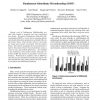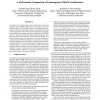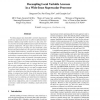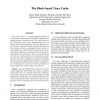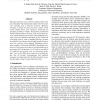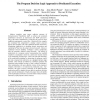ISCA
1999
IEEE
14 years 5 months ago
1999
IEEE
Future computing workloads will emphasize an architecture's ability to perform relatively simple calculations on massive quantities of mixed-width data. This paper describes ...
ISCA
1999
IEEE
14 years 5 months ago
1999
IEEE
Sequential consistency (SC) is the simplest programming interface for shared-memory systems but imposes program order among all memory operations, possibly precluding high perform...
ISCA
1999
IEEE
14 years 5 months ago
1999
IEEE
Current work in Simultaneous Multithreading provides little benefit to programs that aren't partitioned into threads. We propose Simultaneous Subordinate Microthreading (SSMT...
ISCA
1999
IEEE
14 years 5 months ago
1999
IEEE
Value Prediction is a relatively new technique to increase instruction-level parallelism by breaking true data dependence chains. A value prediction architecture produces values, ...
ISCA
1999
IEEE
14 years 5 months ago
1999
IEEE
In response to the growing gap between memory access time and processor speed, DRAM manufacturers have created several new DRAM architectures. This paper presents a simulation-bas...
ISCA
1999
IEEE
14 years 5 months ago
1999
IEEE
Providing adequate data bandwidth is extremely important for a wide-issue superscalar processor to achieve its full performance potential. Adding a large number of ports to a data...
ISCA
1999
IEEE
14 years 5 months ago
1999
IEEE
The trace cache is a recently proposed solution to achieving high instruction fetch bandwidth by buffering and reusing dynamic instruction traces. This work presents a new block-b...
ISCA
1999
IEEE
14 years 5 months ago
1999
IEEE
This paper proposes a new coherence method called "multicast snooping" that dynamically adapts between broadcast snooping and a directory protocol. Multicast snooping is...
ISCA
1999
IEEE
14 years 5 months ago
1999
IEEE
Modern compilers must expose sufficient amounts of Instruction-Level Parallelism (ILP) to achieve the promised performance increases of superscalar and VLIW processors. One of the...
ISCA
1999
IEEE
14 years 5 months ago
1999
IEEE
As microprocessors become faster, the relative performance cost of memory accesses increases. Bigger and faster caches significantly reduce the absolute load-to-use time delay. Ho...

